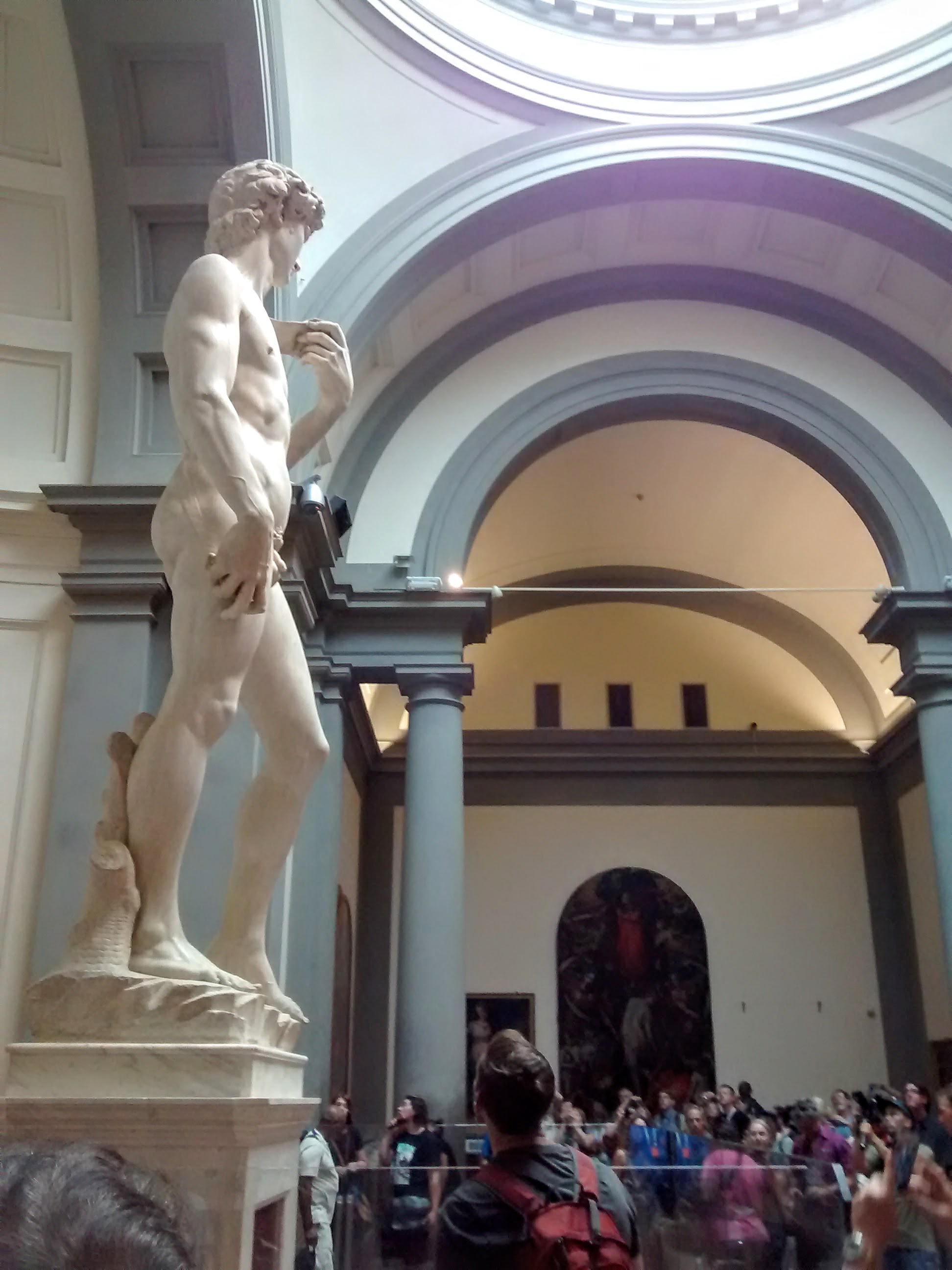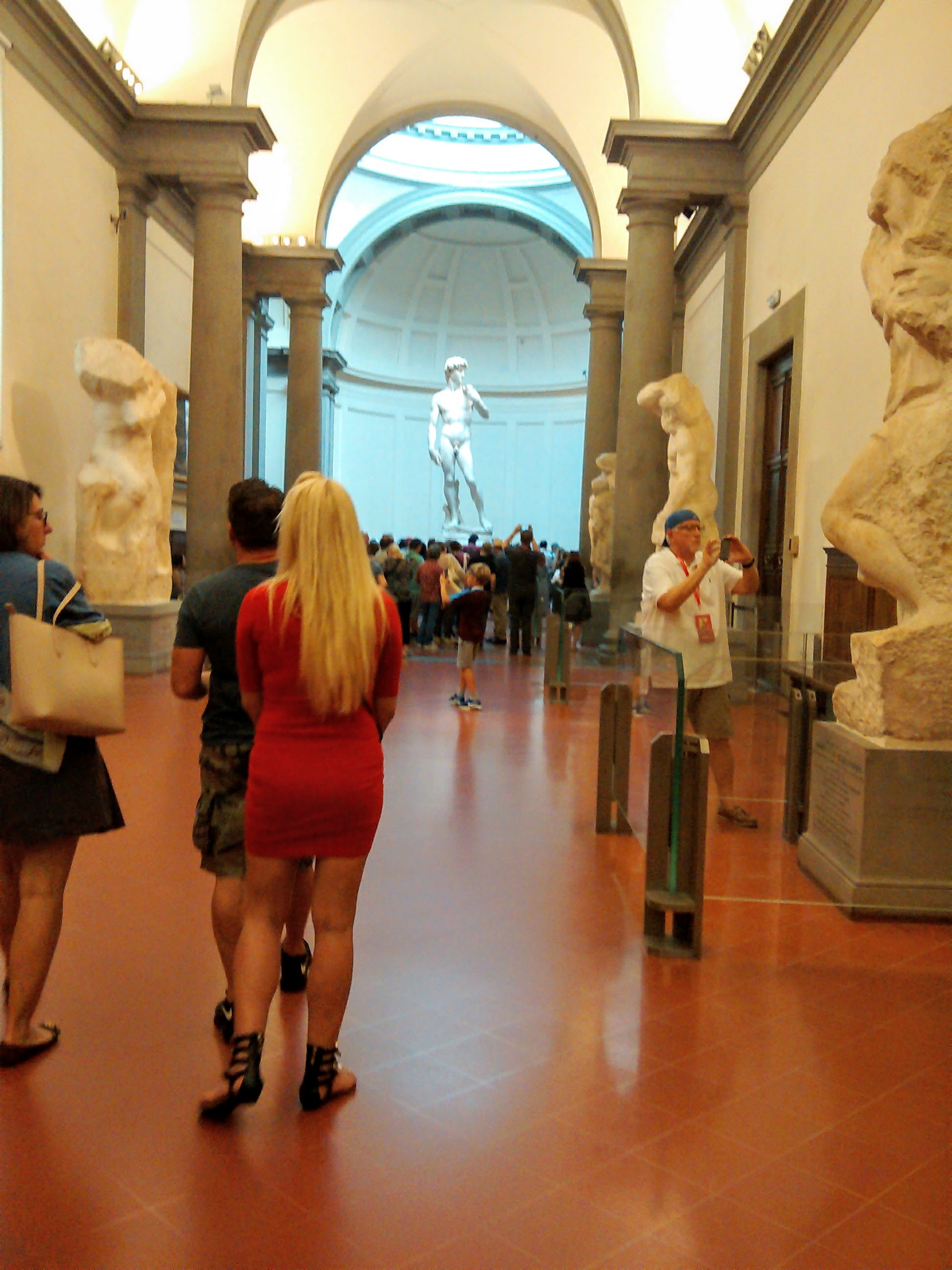FLORENCE
Florence – the capital of the
Tuscany region and the cradle of Renaissance

We opted for Flix Bus while traveling
from Venice to Florence. The road journey takes about three and a half-hour. In
Florence, it terminates at the rear end of Santa Maria Novella (SMN) train
station. One of Italy’s busiest stations, it got its name from Santa Maria Novella
Church just across the plaza from the main entrance. We debarked at the station
and refreshed ourselves at McDonald's before hiring a cab for our hotel.
Florence, popularly known as ‘Firenze’ by the Italians, is located in central
Italy. This dreamy city with a romantic name is the regional capital of the
lovely Tuscany region.
Columbus Hotel, where we stayed, is
located in Lugarno District. We always prefer to book our hotels through
Booking.com as we always land up getting good hotels at good locations. Despite
being a little away from the heart of the city and Santa Maria Novella station,
our hotel can still vie for being situated at an ‘excellent’ location. It is in
the proximity of the city’s historic center and a stone’s throw away from the
historic river Arno. We were fortunate to get a room whose balcony overlooked
the river. We could also enjoy the sunset over Arno from our hotel balcony. The
river had more to offer. Eateries and pubs on the river banks, numerous bridges
including medieval ones, and the oldest and the only surviving covered stone
bridge ‘Ponto Vecchio’ from the Roman era. This bridge, free of any vehicular
traffic hosts shops and a marketplace and spans the narrowest portion of the
river. The most encouraging part of our stay was the bus stop which
incidentally was about a couple of minutes' walk from our hotel. Though buses
were more crowded compared to most of their European counterparts, the service
and frequency ensured comfortable rides to all the places of interest. Another great
thing about our hotel was the grand buffet breakfast. In addition, an ice cream
parlor close to the bus stop made our stay more enjoyable. A family-run gelato
shop that had a wide variety of tantalizing ice creams displayed at its
counter. We frequented the parlor so much that we soon befriended the lovely
lady who looked after it.
In the birthplace of the Renaissance and
a city famous for museums, our first attempt was to see ‘David’ of
Michelangelo. The entire Tuscany region is regarded as a cradle of the high
Renaissance. The rebirth from the dark ages started in the 13th century and
peaked in the 16th century. The movement encompassed areas in culture,
political science, philosophy, and art in particular. It so happened that
pioneering efforts to the movements emerged from the Tuscany region. Such as
Niccolo Machiavelli, a historian who later came to be known as the father of
modern political philosophy and political science; Leonardo da Vinci, a
polymath who excelled in a vast range of subjects from paintings, paleontology,
science, and engineering to astronomy; Michelangelo, a legendary sculptor,
painter, and architect. Their art brought about remarkable changes such as a
focus on naturalism and human emotion. The original David of Michelangelo is
located in Accademia Gallery on Via Ricasole (near the Cathedral of Santa Maria
del Fiore). Pietro Leopoldo, the Grand Duke of Tuscany founded this Accademia
in 1784 to initially serve as a place for students of art. Gradually it started
housing important works of paintings and models from the thirteenth to the
sixteenth century. Artists of the Renaissance period. Amongst them Giambologna,
Botticelli, Monaco, Pantorus, Michelangelo. Michelangelo, the greatest
Renaissance artist, sculpted David from a single white marble block. Originally
it was placed at Palazzo Vecchio. This 17 feet tall Biblical sculpture was
shifted to a covered area inside Accademia in 1873 for weatherization.
After purchasing the entry tickets in
the morning we had to wait till the afternoon as per the visiting time allotted
to us. Fortunately, the weather on that day was comfortable and sunny. We had
enough time to loiter in the central square, visit the nearby marketplace,
listen to a street band and try some munchies in between. When we entered the
museum the first sculpture which caught our attention was a plaster model for
the stunning marble sculpture of Giambologna’s Rape of the Sabine Women, placed
in the center of the ‘Hall of Colossus’.
The museum hosts a rich Renaissance collection. At the Galleria’s ‘Hall of the
Prisoners’, I simply could not take my eyes off the tall sculpture of David
that stood at the central pedestal right under a circular skylight. So unique
that I am now unable to recall how long I stood in awed silence in front of the
sculpture, struggling to comprehend how a sculptor could bring out details of
human anatomy like arteries, veins, and muscles on a nude figure of David and
that too from a single marble block. Indeed a mind-boggling situation. To add
to this wondrous experience was the sheen displayed on the white marble
sculpted about six hundred years back as the sunlight glinted off the statue.
The statue was sculpted from a single marble block by Michelangelo when he was
only twenty-four years old, and it took about three years to complete the
masterpiece.
We saw some more works of Michelangelo
such as unfinished “Slaves”, an unfinished statue of St. Matthew, etc., but it
was ‘David’ who stole the show and kept us riveted for a long period. Several
replicas have come up following the original, but I stubbornly believe that the
intricate details and artistry in the original such as subtle veins and
muscles are impossible to replicate. A full-sized replica of this statue now
stands at Piazza Della Signoria, outside Palazzo Vecchio, the same spot from
where the original statue was removed and moved to Accademia Galleria.
On the south of the Arno River, atop a
hillock is Piazzale (Plaza) Michelangelo, a square dedicated to the great son
of Florence. The square is connected to the city center by frequent buses, but
the final stop is a little ahead of the spot where another full-sized replica
of David is cast in bronze stands. When we reached there in the evening, the
plaza was abuzz with revelers and tourists. They all thronged there to enjoy a
band playing out some popular old melodies while waiting there to catch a view
of the sunset. Unperturbed by the surrounding activities, an attractive young
lady in Shakespearean attire was rehearsing a shot for a film.
To me the most exhilaratingly beautiful
region in Florence is Fiesole. A quaint little place, it is at the same time
cute and seemed far away from the madding crowd when we reached there in the
morning hours. Initially, I thought it is an elevated part of Florence city.
Later on, I learned that it is a small village tucked in the northern Tuscan
Hills. Very well connected by bus it took about half an hour from the city
center. The place was on a tableland, and the panoramic view of Florence city
was simply spectacular. Here also the entire city including the Florence Duomo
appears to be cradled in a well when viewed from the top.
The Duomo is the largest and most
exquisite masonry work in the world. It is a prominent and iconic landmark of
the Florentine skyline. The building of the grand cathedral of Santa Maria del
Fiore was conceived at the end of the 13th century and it took about 150 years
to complete. The cathedral had been under construction for a century with no
solution as to how the dome-shaped roof should be built. Filippo Brunelleschi,
a young goldsmith who had no idea or exposure to architecture finally came up
with a solution that produced one of the great masterpieces that to date has
survived the ravages of time over centuries. The dome is so large that about
four million bricks were used in its construction. The bus terminus is near a
sweet courtyard embellished with some beautiful sculptures.
At the other end stands a chapel. A
small walk to the left of the courtyard stands Bandini Museum built in mid 18th
century by an erudite librarian Angiolo Maria Bandini. The museum displays
Tuscan artworks from the medieval to the Renaissance period. Some Roman
archaeological ruins and artifacts on the external grounds next to Bandini
Museum are on view when the Romans conquered and inhabited the place in the 2nd
century BC. However, the amphitheater built during that period remains intact.
Since we had to take the afternoon bus to Florence and we still had an hour in
hand, we had a delectable Tuscany lunch in a restaurant overlooking the city of
Florence. While in Florence, we frequented the Santa Maria Novella Station as
it lies right in the heart of the city. As I had mentioned earlier the symbol
of Florence ‘the famous Duomo’ lies right across the square adjoining the
frontal façade of the station. Right across are a bustling shopping complex and
some attractive open-air restaurants. On the left looms the famous Cathedral-an
edifice which boasts as a masterpiece of Florence. We too found it a real
masterpiece from any perspective we looked at it. Apart from this most of
Florence’s bus lines are located at the SMN station, including buses that took
us to Fiesole. And finally, of course, the high-speed, regional, and intercity
trains run by Trenitalia. The station is a terminal station and all
conveniences are properly located, right from ticket counters, automatic
ticketing machines manned by young girls and boys to help you get the tickets,
snack bars, eateries, washrooms, etc. In other words, the layout and arrangement are so
nice that a tourist feels at home and does not have to go about enquiring. From
this station, we availed trains to other places in the Tuscan region such as
Pisa and Cinque Terre, and finally for traveling to Rome.
Photo Credit: Arundhati Sengupta (Ruby)
 |
| Florence Duomo |
 |
David at Accademia - the original David sculpted out of a single marble block by Michelangelo
|



























Comments
This beautiful, crisp piece of writing cleverly juxtaposes the dreaminess of Florence with its deep historical essence.
Also, loved the reference to gelato! After all, what is Italy without its culture,Renaissance art, monuments and oh yes the gelato.
The pics have done equal justice to the writing.
Summer Camps In Ireland